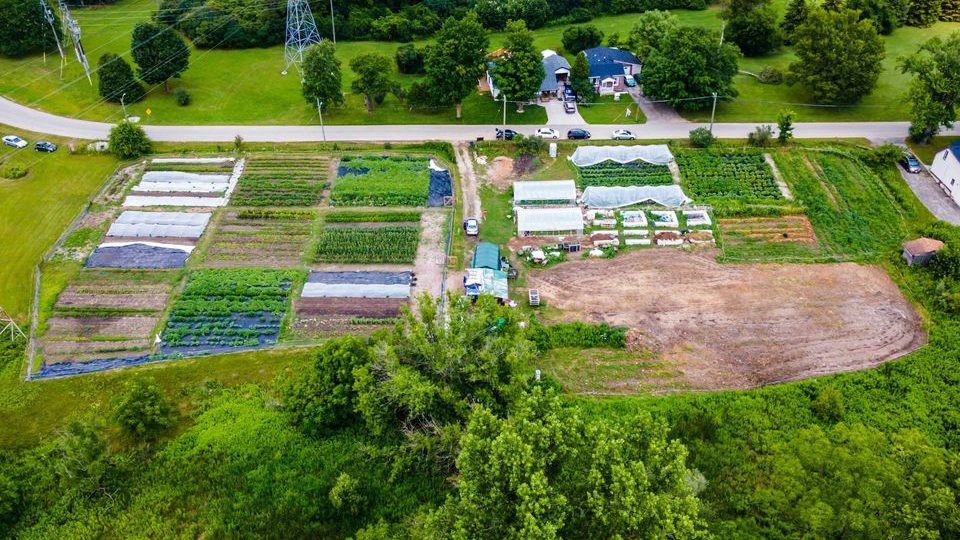The Implications of Food Waste in Canada
In this paper, I will discuss the implications of food waste in Canada and how food waste may be combatted. First, I will discuss what food waste in Canada entails and how it may correlate to the United Nations’ Sustainable Development Goals (SDG). Specifically, I will discuss the idea of “Farm to Fork” and how food waste occurs at every step of the production and distribution process. Second, I will discuss the social and economic implications relevant to food waste. Specifically, how these implications impact food waste in the long-term. Finally, I will discuss current solutions being introduced to combat food waste. Specifically, I will draw on an example of a London based organization, Urban Roots.
Food waste in Canada has been a significant environmental issue that has been emphasized in recent years. Food waste or food loss can be described as “food that is grown or harvested, but never eaten”. (Environment and Climate Change Canada) However, food waste and food loss also have individual meanings where food loss specifically applies to “the point of maturity of a crop or harvest up to, but excluding, the retail stage” whereas food waste? can be applied to “the retail and final food preparation and consumption stages”. Essentially, food waste is the loss of food across the production chain which is suitable for human consumption but is lost along the way (Value Chain Management Centre – VCMC). Environment and Climate Change Canada (ECCC) have identified the implications of food waste and in 2015, Canada committed to the United Nations 2030 agenda for Sustainable Development, specifically to Sustainable Development Goal 12 which is to “ensure sustainable consumption and production patterns”(ECCC). Goal 12 largest target is to have “halve per capita global food waste at the retail and consumer levels and reduce food losses along production and supply chains, including post-harvest losses” all by 2030. Meeting this goal could benefit Canadians by saving money and improving the efficiency and competitiveness of the agri-food and agriculture sector. In the United Nations Sustainable Development Goals, it is outlined how food is being lost on a global scale at every part of production with 13.3% being lost after harvest and before retail and 17% being wasted at consumer level.
To better explain where the food is wasted/lost the ECCC describes food waste in the terms of “Farm to Fork”. In the Farm to Fork process there are a variety of different steps where food waste occurs: production, transportation and storage, packaging processing and manufacturing, wholesale and distribution, retail sales, within restaurants and other food services, and in households or with consumers. Although each step contributes to the overall amount of food waste that we produce, I will focus on two of these steps: retail sales and restaurants/other food services. Approximately 12% of food loss in Canada occurs during the retail phase whether it be because the food does not meet visual quality standards, is stored inadequately, is damaged upon arrival, or an inventory oversupply. Within restaurants or other food services, approximately 21% of dairy, eggs, and field crops, 38% of produce, and 20% of meat is wasted. This is due to factors such as food being prepared but not served, food being partially eaten, a surplus of inventory, and inadequate storage(ECCC).
Food waste, although an environmental issue, still impacts many different facets of our lives and extends far beyond the overuse of our natural resources (VCMC). In fact, it effects our economies more than one may expect. For example, food waste within a business such as a restaurant, does not only impact the business itself but also the customers of the business as they would then have to pay a higher rate for food to make up for the revenue lost to food waste. In 2014, it was estimated that food waste costed Canada nearly twenty-seven billion dollars and it is projected that food waste is currently costing around thirty-one billion dollars. It is important to note that nearly fifty percent of the food waste occurs in the hands of consumers. When discussing food waste economically, it is not just the loss of food that creates the economical deficit, rather other factors that go into the food production process such as labour, energy, transportation, infrastructure, and disposal costs, create the mass amount of economic loss. Although the social implications of food waste are seemingly less prevalent the largest social impact that it brings is in relation to the first SDG, no poverty. One of the largest social issues across the globe is poverty. Finding a way to combat food waste and repurpose food loss into a strategic action plan to combat poverty on a global scale could exponentially increase the quality of living for many people.

The long-term implications of food waste surround constant economic inflation and the environmental impacts that continue to jeopardize the health of the planet. This is due to the amount of methane, which is a powerful greenhouse gas, that food waste produces, which significantly adds to the amount of methane emissions Canada contributes on an annual basis. When food loss or food waste is disposed in landfills, its degradation creates a greenhouse gas that is twenty-five times more powerful than carbon dioxide.
Food waste as an issue is not new and in recent years there has been an emphasis on finding an effective and long-term solution. In fact, the public sector, the private sector, and the non-profit sectors all are creating independent solutions to food waste. For example, the Ontario provincial government has implemented the Food and Organic Waste Policy Statement which proposes activities such as “developing awareness and educational tools, directing food retailers and businesses to reduce food waste in their own operations, and working with schools to educate children on preventing and reducing food waste”. Another government initiative to combat food waste was a new budget of twenty-million dollars specifically allocated towards reducing food waste and food loss in Canada. In the private and non-profit sectors there are many different organizations specifically focused on combating food waste.

For example, Urban Roots is a farm operated in London, Ontario which produces organic vegetables and herbs where they can be distributed and produced locally. Urban Roots creates agricultural opportunities for London and the surrounding towns while also partnering with social enterprises and community organizations within London. The goal of Urban Roots is to ensure that the farm can be self-sustaining over the long term so they are able to distribute and donate everything that they grow with zero waste at the end. Although organizations like Urban Roots are still developing to be sustainable and effective over the long term, they are an excellent beginning to combating food waste.
Ultimately, the implications of food waste in Canada, affect us both on a social and economic scale. To combat food waste on both a local and national level, it begins with acknowledging how food waste occurs across the entire “Farm to Fork” production process. Especially in relation to the long-term impacts on a global scale, as related to the United Nations SDGs. Then it is important to create creative and effective long-term solutions to food waste, such as the development of organizations such as Urban Roots. Overall, food waste is a large environmental issue, that must be combated in years to come.
Bibliography
“Goal 12 | Department of Economic and Social Affairs.” United Nations. United Nations. Accessed February 9, 2023. https://sdgs.un.org/goals/goal12.
“Growing Fresh, Healthy, Connected Communities.” Urban Roots. Accessed February 14, 2023. https://www.urbanrootslondon.ca/about/.
“Hunger in Canada.” Feed It Forward, December 11, 2020. https://feeditforward.ca/hunger-in-canada/.
Taking Stock: Reducing Food Loss and Waste in Canada. 2019. Environment and Climate Change Canada.
The Cost of Canada’s Annual Food Waste. 2014. Value Chain Management Centre.

This blog post series is an ongoing partnership between the SDG Cities program at Pillar Nonprofit Network and the Environmental Stewardship course in the Governance, Leadership, and Ethics program at Huron University. As part of their assignments, students are required to write about real-world challenges using the UN Sustainable Developments Goals (SDGs) as a holistic framework to analyse the problem and propose solutions that could lead to systemic change and a better future for all. The series presents an opportunity for students to address practical and meaningful challenges that their communities are facing currently, and an opportunity for SDG Cities to enrich their program by including youth perspectives.
All opinions expressed by the guest authors do not necessarily reflect the opinions of the SDG Cities program or Pillar Nonprofit Network.

